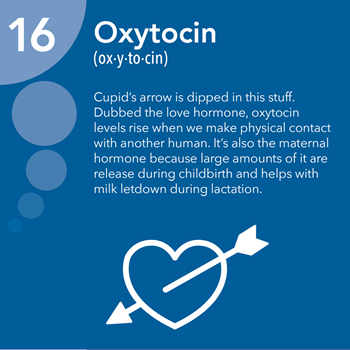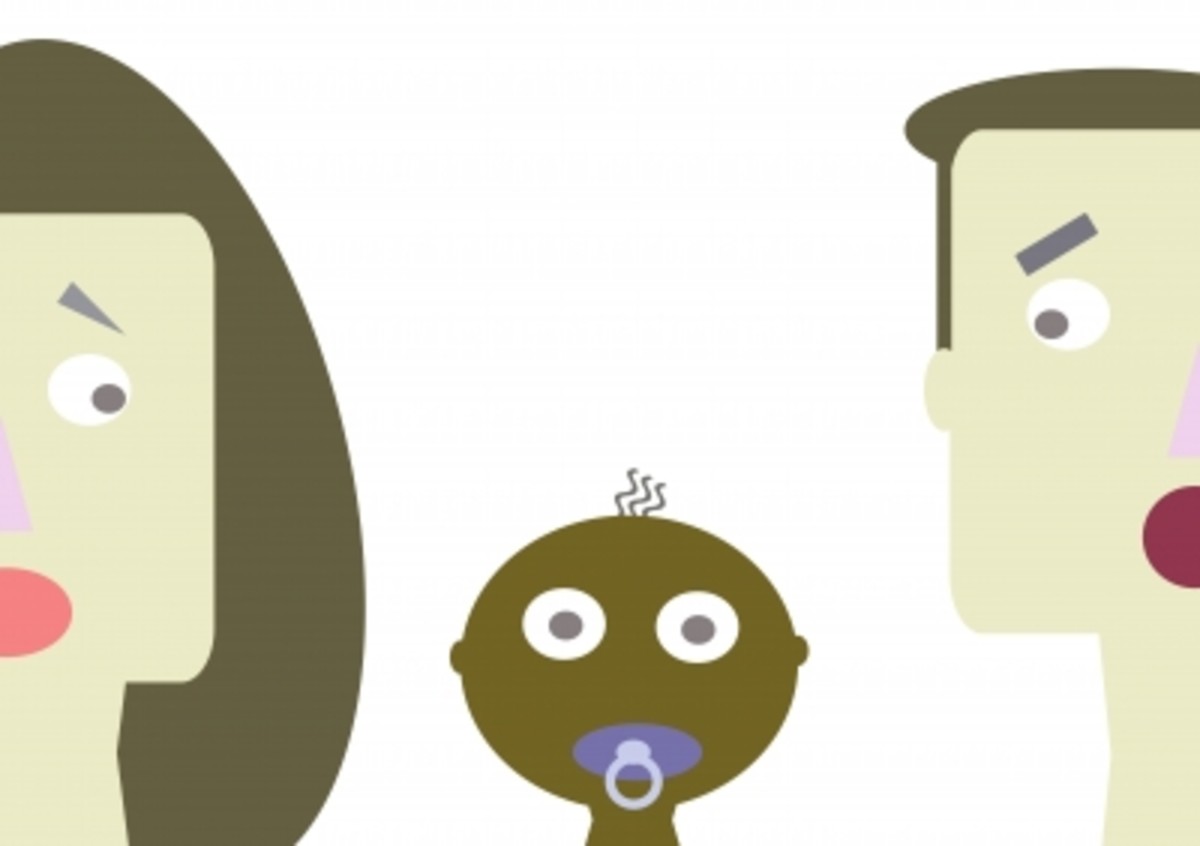Why Scientists Say Romance and Fidelity Remains Strong with Oxytocin
The Cuddle Hormone
Oxytocin, sometimes called the “cuddle hormone” or “love hormone,” is popularly known to load up when a mother starts contractions during labor, and gushes at childbirth, remaining high when mommy cares and breastfeeds her baby.
New science reveals that oxytocin also helps to predict the future of love and marriage relationships, among others. It emanates from the pea-sized pituitary gland at the brain’s base. It is small, but mighty. Oxytocin makes you more trusting, generous, and sociable -- qualities that contribute to personal happiness and loving relationships.

Oxytocin and faithfulness in love
Jeremy Adam Smith, editor of Greater Good, the online magazine of UC Berkeley’s Greater Good Science Center, says new research reveals that beyond cementing love relationships, oxytocin also permits exclusion, i.e., keeping away from others who may pose threats to your love relationship. Although the research is new, discoveries continue to be made. Recent science shows:
- Oxytocin keeps you loyal —and leery.Despite the dopamine rush that men get from sex, research shows that men with a lot of oxytocin are loyal in loving relationships -- to the point that they are wary of other women. A 2012 study by Dirk Scheele, Department of Psychiatry, University of Bonn, Germany, highlighted this. The study, published in The Journal of Neuroscience, proceeded as follows:
- Oxytocin, new love. Scheele measured oxytocin levels through blood tests in couples.
- Oxytocin sniff. Next, he measured the relationship between oxytocin and faithfulness. Scheele divided 57 German, heterosexual male participants into three groups. Two groups were in a relationship or were married, namely, groups A and B. Group A was given a nose spray of oxytocin. Groups B and C (the singles group) were given placebos. Each man was then sent to a private room to answer a list of questions asked by a beautiful young woman.
- c. Test results. In the end, the men who snorted oxytocin kept a large space between them and the woman. The men from groups B and C leaned in, extremely close to the woman. Scheele and peers concluded from this experiment that oxytocin not only keeps men in love, it also keeps them faithful.

The Power of Oxytocin
- Oxytocin is highest during the falling in love phase. Psychology professor Ruth Feldman, Bar-Ilan University, Israel, in a study published in Psychoneuroendocrinology, stated that oxytocin levels were highest during the period of falling in love, and is double the oxytocin level of pregnant women giving birth.
- A new couple’s oxytocin level is an indicator of whether or not they will last together longer. Feldman noted that couples who were together for three months and had higher oxytocin levels were more likely to be together six months later, compared to similar couples with lower oxytocin levels when they first met and fell in love. This is how the study was done:Oxytocin makes us wise in relationships. While oxytocin makes us more generous and trusting, it doesn’t make us gullible. If we see proof that someone is deceiving us, we withdraw trust and resources.a. Feldman’s team measured oxytocin levels of 60 couples aged 20 – 29, in new, three-month old or less, relationships.All couples were interviewed, first individually, and then together

Feldman experiment continued
- A control group of 43 singles were also tested.
- The couples had twice as much oxytocin levels compared to the singles.
- The couples were tracked for the next six months.
- Those who stayed together after six months had the same levels of oxytocin as when the first blood test was drawn. The couples were also more affectionate, more tactile, and showed more joy, interest, and alertness when together. They also had anxieties and worries when they felt that their relationship was threatened, not unlike that of an infant when separated from his or her mother.
- The couples that separated within six months had reduced levels of oxytocin.
- Oxytocin and sex. What about oxytocin and orgasm? Dr. Arun Ghosh, sexual health specialist, Spire Liverpool Hospital, revealed in a study that oxytocin spikes during orgasm in women – far more than it does in men. Instead, men get a bigger wallop of dopamine, the pleasure hormone. Dopamine makes men more vulnerable to sex addiction than women. By contrast, Dr. Ghosh says oxytocin lowers a woman’s defenses, raises empathy, and makes her more trusting. She is vulnerable to falling in love because her body cannot discern between casual sex, and sex with men who are good marriage material.
- Starting sex with kisses equalizes oxytocin levels in men and women. Sex is much more gratifying if you start with about 15 minutes of kissing or more. This is because lips have 100 times more nerve endings than fingertips. Biologically, it also evens up the score. Women naturally have higher levels of oxytocin than men, but when kissing, oxytocin is reduced, approximating that of men. Women also get a kick of dopamine which preps them for better sex than if you didn’t start with kissing. Dr. Ghosh says that kissing also lowers cortisol, your stress hormone.

What about dysfunctional relationships?
The same study noted that the huge impact romantic relationships have in the lives of people can also be harmful if you are into a dysfunctional relationship. For example:
- A 2002 study by Canetto and Lester; and a 2009 study by Emanuele, noted that dysfunctional romantic relationships and one-way loves are linked to inordinate mental distress. The most common cause of suicide is love problems -- as seen in suicide notes. This underscores the need for further studies on the neurobiology of healthy, loving relationships.

How to increase oxytocin in our bodies
Whenever I talk about oxytocin, people eagerly ask, “How can I get it?” thinking it can be bought in a drug store. Although it can be purchased with a doctor’s prescription, Paul J. Zak, scientist, entrepreneur, and author of “The Moral Molecule”, says there are many ways to activate and raise the oxytocin that is already inside your body. For example, you can:
- Give your full attention when someone you love is talking. Silence your mobile phone, look at the person’s eyes, and listen sincerely with full attention. Show that you care about what the person is saying. Don’t plan your response while the person speaks.
- Soothing music. If you plan to meet your partner at the end of the day, chances are you are both stressed from work. Soothing music can ease stress, relax both of you, and help raise your oxytocin levels, strengthening the bond that you share.
- Share food. In movies, there is often a scene where someone cooks for somebody he or she likes. Sharing food promotes oxytocin, provided the conversation is good. The food may go wrong, but the oxytocin remains high because of the effort. But be wary of that scene from the movie La La Land where Ryan Gosling cooks dinner for Emma Stone, but as they eat, she learns his job will keep him on the road for two years. If instead, a man talks of your future together and then offers you a bit of food from his plate, he’s probably a keeper.
- Loving-kindness meditation focuses on loving others. Dr. Zak says it fosters stronger social connections. Gil Fronsdale, author of "The Issue at Hand", lists the steps in loving-kindness meditation:
- Sit down comfortably. Take three slow, deep breaths, and as you exhale, release any concerns you have. Focus on your breathing, as it moves from your chest to your heart until you exhale. Then say, over and over, “May I be happy. May I be well. May I be safe. May I be peaceful and at ease.” Imagine yourself while saying this.
- Next, think of someone who loves you. Continue to breathe and say repeatedly, “May you be happy. May you be well. May you be safe. May you be peaceful and at ease” with heartfelt intention. If you feel love, blend it with the phrases.
- Add family, friends, acquaintances, strangers, and people who have harmed you. Repeat the phrases, sending loving-kindness to them. If grief, anger, or sadness is felt, it only means you are softening enough to eventually see what is hiding inside yourself. Don’t judge yourself because of these feelings.
- Send good wishes universally: Do the same procedure and say, "May all beings everywhere be happy. May all beings everywhere be well. May all beings everywhere be safe. May all beings everywhere be peaceful and at ease.”
- Loving-kindness meditation does much more than bring momentary good feelings. If you do it for nine weeks, studies show an increase in experiencing positive emotions. It also puts you on a path of growth and provides a better way to approach life.
- A long, hot bath exercises your blood system, and energizes and strengthens your heart with the water’s heat, and releases your oxytocin. You feel relaxed and soothed, physically and mentally. As for romance, bathing together is good.
- Say “I love you”. The reason why oxytocin is called “the love molecule” may be because when you say “I love you”, you both get oxytocin released. My husband and I like to say “I love you” many times within a day. We’ve been married some 30 years and haven’t gotten tired of it yet.
About the author
Mona Sabalones Gonzalez has completed certificate course on The Science of Happiness from Yale, UC Berkeley, USA, and The Indian School of Business. She is a public speaker who has, for one year written lesson plans for life coaches. She is a veteran writer who has written many articles about personal development and the Science of Happiness, that have been published in Enrich Magazine.






